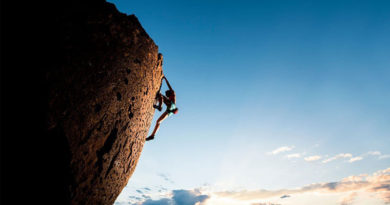What is Climbing Chalk?
Climbing chalk is a dry powder substance that climbers use to improve grip and prevent slipping on holds. It is also known as magnesium carbonate or gym chalk. Chalk is made from magnesium carbonate, which is a naturally occurring compound. Magnesium carbonate absorbs moisture and reduces friction on the skin. Applying chalk to your hands keeps your hands dry, reduces slippage, and provides a better grip on holds. Chalk is commonly used in bouldering, gym, and other rock climbing. Climbers often carry it in a chalk bag or ball for easy access and application during a climb.
What does Climbing Chalk do?
Climbers use chalk to improve grip and prevent slipping on holds. The dry powder absorbs moisture and reduces friction on the skin. Dry skin improves grip on rock or climbing holds. This reduces the likelihood of slipping and provides a more secure grip, making climbing easier and safer. Using chalk is a common practice in rock climbing, bouldering, and gym. Climbers usually carry chalk in a chalk bag or ball for easy access and application. Chalk can also reduce sweating and skin irritation, making it an invaluable tool for climbers of all skill levels. Learn more about what chalk does for climbers here.
Chemical Composition
Climbing chalk is typically composed of magnesium carbonate, which is a naturally occurring compound. Magnesium carbonate absorbs moisture and reduces friction on the skin, making it an ideal substance for use in climbing. Some brands of chalk may also contain other ingredients such as titanium dioxide. This additional chemical can improve the texture and provide additional benefits such as UV protection. The specific chemical formula for magnesium carbonate is MgCO3. It is a white, odorless, tasteless powder that is soluble in dilute acids. The magnesium carbonate used for climbing chalk is often processed to have a fine and powdery texture.
Types
There are several types of climbing chalk, including:
- Pure Magnesium Carbonate: This is the most basic form of chalk and consists solely of processed magnesium carbonate.
- Chalk with Added Ingredients: These types of chalks come with additional ingredients such as titanium dioxide. Titanium dioxide improves the texture and provides additional benefits such as UV protection.
- Liquid Chalk: Liquid chalk is a form of chalk that comes in a liquid solution. You apply it to the hands in the same way as dry chalk. However, liquid chalk provides a longer-lasting grip and reduces the amount of chalk dust generated.
- Chalk Balls: Chalk balls are small and compact balls of chalk that can that you can carry in a chalk bag or chalk bucket. Manufacturer design chalk balls to dispense chalk in a controlled manner and reduce the amount of chalk dust generated.
Chalk of all types serves the same basic purpose: to improve grip and reduce slippage. Personal preference, the type of climbing you do, and environmental considerations may all influence the type of chalk you use. To reduce the amount of chalk dust generated you can use liquid chalk or chalk balls. You can also use traditional dry chalk because it is effective and simple to use.
Proper Use of Climbing Chalk
Here are some tips for the proper use of climbing chalk in rock climbing, bouldering, and gym climbing:
- Keep Chalk Dry and Avoid Clumping: Keep your chalk dry and free from clumps, as clumped chalk is less effective. You can prevent clumping by keeping your chalk bag or chalk ball closed when not in use. You can also break up clumps periodically with your fingers.
- Use the Right Amount of Chalk: Too much chalk can be messy and generate excess chalk dust, while too little chalk may not provide adequate grip. Use just enough chalk to cover your hands and reduce moisture, without over-applying.
- Minimize Chalk Dust: To minimize chalk dust, consider using liquid chalk or chalk balls, or limit the amount of chalk you apply. You can also minimize chalk dust by using chalk in designated areas, such as climbing gyms or designated chalk areas in outdoor climbing areas.
- Respect the Environment: Be mindful of the environment and avoid using too much chalk or leaving excess chalk on the rock. Some climbing areas have restrictions on the use of chalk, so be sure to follow any rules or guidelines.
By following these tips, you can ensure that you are using chalk effectively and responsibly.
Conclusion
Climbing chalk is an essential tool for climbers that helps to reduce moisture on their hands and improve grip. Consider factors such as ingredients, texture, and dust when selecting chalk. Other important considerations include the brand and price, and any special requirements, such as packaging size or application method. Do your research, read reviews, and ask for recommendations from other climbers. This will help you find the right chalk for you.




